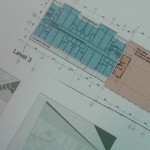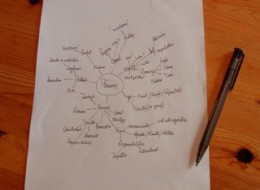 Brainstorming and Gathering Ideas
Brainstorming and Gathering Ideas
It is important when beginning to plan to have some creative ‘out of the box’ thinking, and to get an overview of the ultimate goal and process to achieve it, before becoming too detailed and specific. It is rare that the first thoughts that come to mind are the best! So I will share with you a technique to help free thinking which I carry out in all that I do, whether preparing to preach, thinking about this series of blogs, starting to arrange an event such as the Newfrontiers annual Leaders Conference, Together on a Mission, or helping to plan a long-term ministry.
Spider Diagram
1. Free thinking
Many would start planning by writing items on a list. This has the disadvantage of being linear ie in only one dimension, each item being added after the preceding one. As such it tends to ‘lock up’ thinking and subliminally may even suggest a priority order.
I use a two-dimensional spider diagram, what some call mind-mapping. I find this frees me from being constrained to one dimension and allows apparently random thoughts to be captured. This could be achieved with a large sheet of paper, just writing words anywhere on the sheet as they come to mind – activities, goals, Bible verses etc according to the exercise. However, with experience these can be immediately grouped with similar items and linked with lines, hence the term spider diagram. But if this hinders the flow it is better just to write them down and return to analyse and group them at a later stage.
2. Not a work of art
 In this process you are not producing a work of art, as shown below in the diagram I produced for this series of blogs! Free flow of thought is the strength of this technique and anything that hinders it should be avoided. So it does not matter if the spelling is wrong, the writing is virtually illegible etc if that is the quickest way for you to work. And speed is important – one cardinal rule is never to stop and think deeply about an item as you write it down. This is particularly important if this exercise is being carried out with your team (we will talk about teams later), and this is a powerful way of getting everyone’s input at an early stage.
In this process you are not producing a work of art, as shown below in the diagram I produced for this series of blogs! Free flow of thought is the strength of this technique and anything that hinders it should be avoided. So it does not matter if the spelling is wrong, the writing is virtually illegible etc if that is the quickest way for you to work. And speed is important – one cardinal rule is never to stop and think deeply about an item as you write it down. This is particularly important if this exercise is being carried out with your team (we will talk about teams later), and this is a powerful way of getting everyone’s input at an early stage.
3. Grouping
How does the ‘grouping’ work? Typically there will be key responsibilities or themes in any planning process – finance, resources, personnel etc. When an item is first mentioned that would come under such a category (eg ‘budget’) it is good to start a ‘leg’ of the diagram called Finance, to which all financially related matters are then connected. However, if nothing obvious springs to mind just start another leg with the new item – you will be able to tidy it up and put it in order later.
Using this technique I find that in 3-5 minutes I can capture 30-40 thoughts, ideas or actions, sometimes more (46 on the diagram above), and that they generally cover over 90% of the ultimate matters that need to be considered. However, this is not a science and others may achieve different levels of output from such an activity.
In the next blog I will ‘clean up’ this chart and shall begin to talk about how to analyse it to turn it into a practical planning document.
